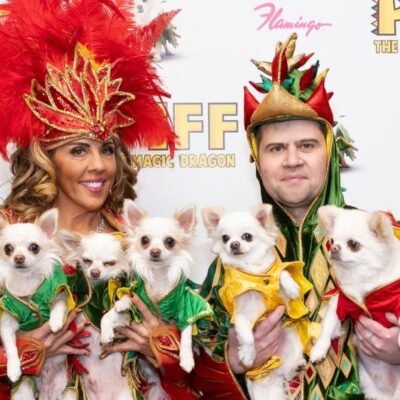
UNLV School of Medicine Professor Edwin Oh prepares a sample of human embryonic kidney cells for students to look at through a microscope during SEFTY, or Science Education For The Youth, a free program that offers research lab experience to science-minded high school students Thursday, July 18, 2024.
Monday, July 22, 2024 | 2 a.m.
UNLV medicine professor Edwin Oh had a simple question for his young students.
“Do you see green cells?”
If they said yes — and, happily, they all did — that meant they had successfully transfused a special protein into a small dish of human kidney cells that allowed the cells to glow green when placed under a beam of blue light emitting from a high-powered fluorescent microscope.
As sophisticated as this sounds, the mechanics of this procedure are basic for a lab like Oh’s. Still, they normally won’t be introduced to a young scientist until well into their undergraduate years.
But 16 high school students from around the state got a jump on things when they gathered in Oh’s laboratory for two weeks this month for a program called Science Education For The Youth.
Here, in addition to transferring the proteins into their dishes of cells, in tiny amounts through a narrow tubular device called a pipette, they read articles from scientific journals, prepared presentations on genetics, and heard about potential careers from faculty from a range of scientific disciplines.
Rehan Pervaiz, who is going into his senior year of high school next month at the Coral Academy of Science Las Vegas’ Sandy Ridge campus, also learned foundational skills like how to avoid contamination by using fume hoods and wiping down his gloves with alcohol before handling specimens.
“We call it aseptic techniques,” he said.
Pervaiz is considering both scientific research and medical school. He’s interested in gene editing and possibly finding ways to reverse ailments like diseases of aging.
Ava Stepro, who is going into her junior year at Green Valley High School, is interested in neuropsychology. She said she had walked down hallways of science buildings like this one on the north end of the UNLV campus and seen laser-focused scholars in lab coats through the picture windows. They looked serious, but after spending time inside Oh’s space, she said the lab is a pretty fun place.
“It’s a lot less intimidating than it’s made out to be,” she said.
Stepro said getting to see and do lab processes will help her when she begins a two-year sequence in advanced biology this fall, having already completed honors biology as a freshman. The hands-on nature of the UNLV program took concepts off the pages of her textbook and “actually helped me learn and hang onto it a lot more,” she said.
Students in the Science Education For The Youth program, a joint venture between UNLV’s medical school and College of Sciences, develop a foundational understanding of research techniques and cell growth as they are given the opportunity to work with DNA, RNA and proteins with a focus on neurogenetics.
Oh is an expert in both neurogenetics and infectious diseases; his wastewater surveillance program has been able to detect surges of COVID-19 and other novel diseases in the local population by seeing what is shed into human waste.
Oh said his class of high school students were an engaged and motivated bunch. And they were able to see what they read about in three dimensions, and know that they did it with their own hands.
“They say, ‘Wow, I did that,’ he said.
This summer’s Science Education For The Youth program has wrapped but will be offered again in the fall and spring semesters in eight-week sessions.
For more information or to register for an upcoming session, email [email protected].
[email protected] / 702-990-8949 / @HillaryLVSun





